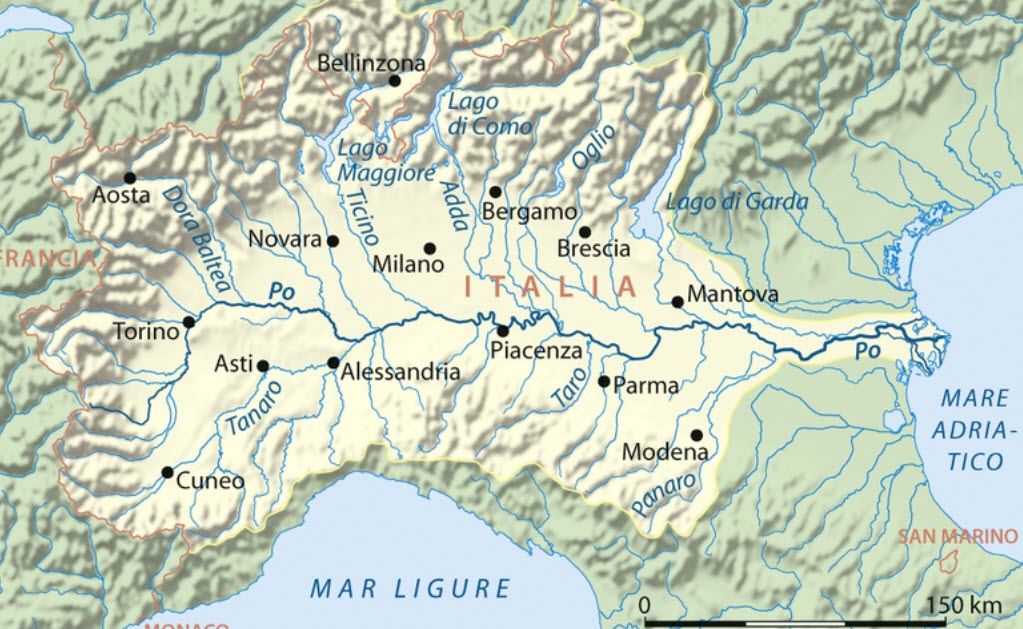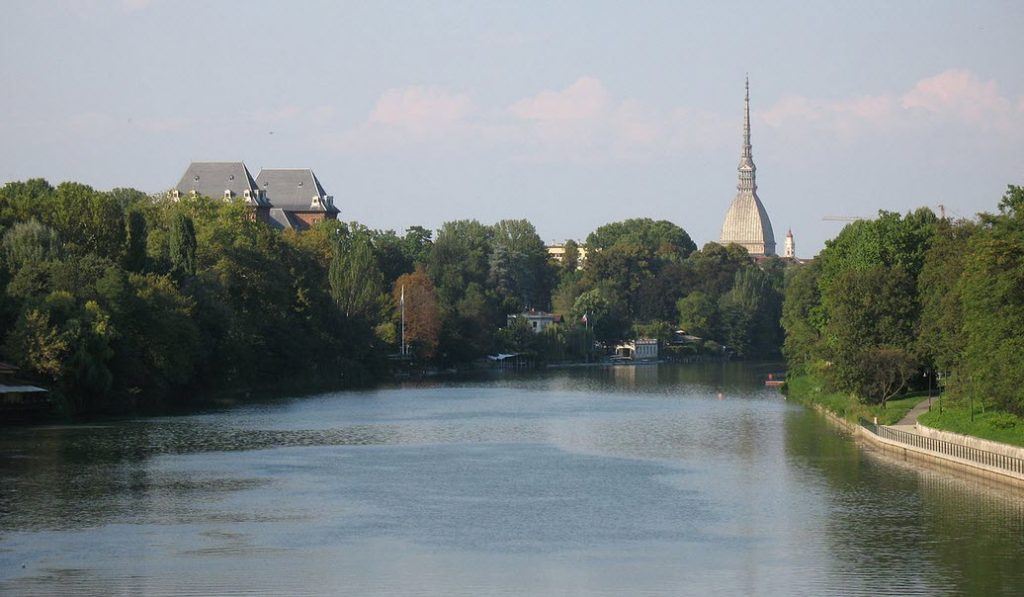The River Po, Italy’s mightiest and longest river, runs for more than 650 kilometers (over 400 miles) from its source in the Cottian Alps of western Italy to its expansive delta pouring into the Adriatic Sea. This significant waterway is a geographical landmark and a pivotal part of Italy’s cultural, economic, and environmental landscape.
The River Po is more than just a river; it’s a lifeline that runs through the heart of northern Italy, shaping the landscape, culture, and livelihoods of its people. From its alpine source to its vast delta, the River Po offers a journey through Italy’s rich history, diverse ecosystems, and vibrant cultures. Exploring the River Po and its surroundings provides a unique insight into the Italian penninsula.
Let’s delve into the journey of the River Po, highlighting its importance, the diverse ecosystems it supports, and the unique cultural experiences it offers along its course.

Source and course of the River Po
The River Po begins its journey in the picturesque Pian del Re, a small plateau near the French border, in the Monte Viso group of the Cottian Alps. From here, it winds its way across the northern Italian plains before finally dispersing into a wide delta by the Adriatic Sea. This river forms the boundary between the regions Lombardy and Emilia-Romagna (south) and Veneto (north).
In the upper parts of its course, the River Po flows eastward and is rapid and steep. During its first 35 km, it descends about 1,700 metres. Just west of Saluzzo, the river turns sharply northward, and it flows through Turin before turning eastward again at Chivasso. From Chivasso, it runs in a more or less easterly direction to the delta. It should be noted that throughout its middle and lower course, the River Po is a meandering river and has formed many oxbows (circular lakes of river origin).
The Po’s course is a lifeline for the fertile plains of northern Italy, contributing significantly to the region’s agricultural prosperity. The drainage basic for the River Po covers over 70,000 square kilometers (over 27,000 square miles) and the River Po plays a crucial role in the agricultural, industrial, and energy sectors of Italy. Its waters irrigate millions of hectares of farmland, essential for cultivating rice, fruits, and other crops. Additionally, the Po Basin is a vital source of freshwater, supports numerous hydroelectric plants, and is central to the biodiversity and ecological balance of northern Italy.
Cultural and recreational activities along the River Po
Visit old towns and cities: The River Po flows past several old towns and cities, each with its own rich heritage. Cities such as Turin, Piacenza, Ferrara, and Cremona are nestled along the riverbanks, offering a blend of magnificent architecture, art, and history. These urban centers provide a glimpse into the cultural fabric that the River Po has shaped over centuries.
Explore the local culinary traditions: The regions surrounding the River Po are renowned for their diverse and exquisite culinary traditions. The river’s waters nourish the fields where ingredients for iconic dishes like risotto alla Milanese and various traditional cheeses and cold cuts are produced. The Eel Festival in Comacchio and the Culatello di Zibello Festival are just a few events celebrating the local cuisine influenced by the river.
Outdoor activities: The River Po and its surroundings are a haven for outdoor and recreational activities. Boating, kayaking, and fishing are popular on the river, while its banks and the Po Delta offer scenic routes for cycling and hiking. The river’s natural and serene setting provides a perfect backdrop for both leisure and adventure, and birdwatchers flock to the Po delta.
The River Po Delta – a Unesco World Heritage Site
The Po Delta is a Unesco World Heritage site, recognized for its outstanding natural beauty and biodiversity. This vast wetland area is a sanctuary for hundreds of bird species, making it a paradise for birdwatchers and nature enthusiasts. The delta’s unique landscapes, characterized by lagoons, marshes, and dunes, offer a tranquil retreat into nature.
This delta is considered one of the most complex ones in Europe and it has over a dozen mouths. Of these mouths, the Po della Pila carries the greatest volume of water and is the best one for navigating up the river.
The river carries a lot of sediment and the delta is constantly changing. Certain ancient ports south of the delta are today fairly far away from the sea due to a build up of sediment. One example is the town Ravenna, which used to be on the sea but is now roughly 10 km away from it.
The River Po is navigable from the mouth Po della Pila to Pavia.

Conservation efforts
The River Po and its delta is facing serious environmental challenges, including pollution and habitat loss. Conservation efforts are underway to protect and restore the river’s ecosystems. Initiatives focus on improving water quality, safeguarding biodiversity, and promoting sustainable tourism and agriculture practices.
History trivia
- During the Paleolithic and Neolithic periods, the lower valley of the River Po was inhabited by people who built their houses on piles along the swampy riverbanks.
- Attempts at regulating the river is nothing new here. Even in pre-Roman times, people tried to regulate this river.
- The Ligurian name for the river was Bodincus or Bodencus, which means bottomless.
- A lot of land reclamation projects along the river were carried out during the Roman era. In some places, rectangular divisions are still visible. Much of the land protection systems were eventually left to decay as Roman power in the area weakened, but protection efforts resumed again during the Middle Ages.